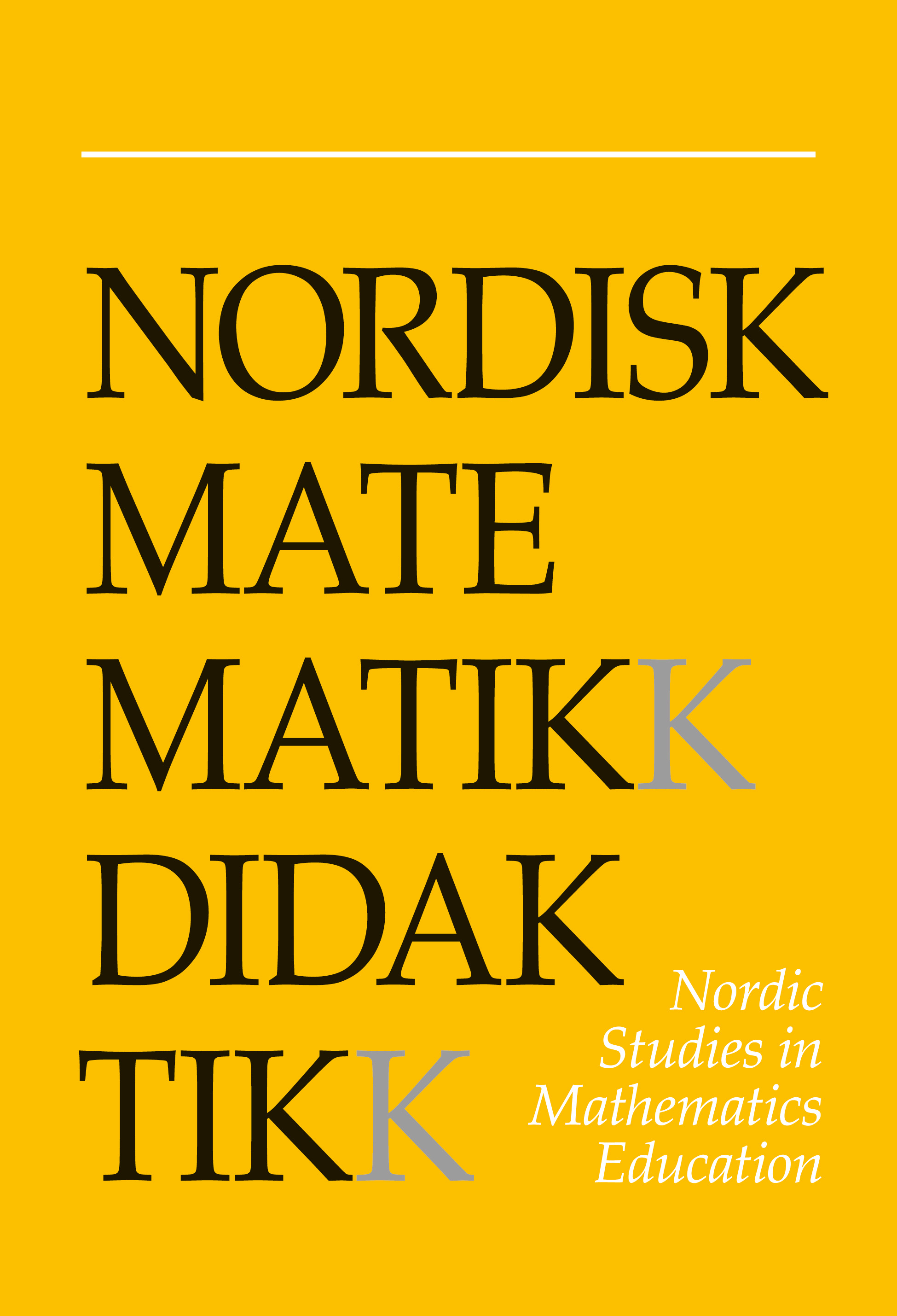Open ended problem solving in geometry
DOI:
https://doi.org/10.7146/nomad.v2i2.146040Abstract
This article is a documentation of a project on open ended problem solving in geometry at Agder College. The project is part of a geometry course and is based on co-operation in small groups. Why we did it, how we did it, how it developed, and what came out of it is the main core of the article. Our conclusions are:
– It is possible to have students experience the whole process of doing mathematics.
– Geometry is a rich resource for finding problems to do so.
– It is possible to create learning environments where students co-operate and give each other support to go through the process together.
– It is possible to do this within ordinary courses in the first year at college/university.
– There has been observable progress on process writing and evaluation. The students' attempt to generalize and formulate new problems are not satisfactory.The emphasis on process writing and evaluation seems to have an effect on the students' motivation and understanding of doing mathematics.
– The students experience a great need for encouragement and support in the process of doing mathematics.
– Co-operation in small groups is highly recommended by the students.
References
Bekken, O.B., Borgersen, H.E.,& Breiteig, T. (1978). Report from Norwegian associa- tion of mathematics working group on mathematics education. Skrifter 1978:2 Fagseksjon for matematikk, Agder distriktshøgskole. (Norwegian)
Borgersen, H.E. (1984a). Discovery and investigation - starting with a problem in plane geometry. Skrifter 1984:1 Fagseksjon for matematikk, Agder distriktshøgskole.
Borgersen, H.E. (1984b). The maximal T-triangle of a given triangle. Skrifter 1984:2 Fagseksjon for matematikk, Agder distriktshøgskole.
Borgersen, H.E. (1987). Geometry in teacher education. Nordisk Matematisk Tidskrift, 35(2),57-72. (Norwegian)
Borgersen, H.E. (1993). Afamily of associated triangles and Fermat points. ADH-serien no. 58, Department of mathematics, Agder College.
California State Department of Education (1985, 1992). Mathematics framework for California public schools. Kindergarten through grade twelve. Sacramento: California State Department of Education.
Cockcroft, W.H. (Chairman) (1982). Mathematics counts. London: Her Majesty's Stationary Office.
Coxeter, H.S.M., & Greitzer, S.L. (1967). Geometry revisited. New York: Random House, Inc. https://doi.org/10.5948/UPO9780883859346
Dahl, H. (in press). Teaching small groups. Experiences at Agder College 1973-1993. ADH-Serien, Agder Distriktshøgskole.
Davidson, N. (Ed.) (1990). Cooperative learning in mathematics. A handbookfor teachers, Addison-Wesley Publ. Comp.
Johnson, D.W., & Johnson, R.T. (1987). Learning together and alone: Cooperative, competitive, and individualistic learning. (2d ed.) Englewood Cliffs N.J.: Prentice Hall. Johnson, D.W., Johnson, R.T., Johnson Holubec, E., & Roy, P. (1988). Circles of learning. The Association for Supervision and Curriculum Development.
Honsberger, R. (1978). Mathematical morsels. The Mathematical Association of America. Kirke- og undervisningsdepartementet (1987). Mønsterplanen for grunnskolen. Oslo: Aschehoug. (Norwegian)
National Council of Teachers of Mathematics (NCTM) (1980). An agenda for action. Reston VA.: NCTM.
National Council of Teachers of Mathematics (NCTM) (1989). Curriculum and evalua- tion standards for school mathematics. Reston VA.: NCTM.
National Council of Teachers of Mathematics (NCTM) (1991). Standards for teaching mathematics. Reston VA.: NCTM.
Polya, G. (1945). How to solve it. Princeton: Princeton University Press. https://doi.org/10.1515/9781400828678
Polya, G. (1954). Mathematics and plausible reasoning. I. Induction and analogy in mathematics. II. Patterns of plausible inference (2 volumes). Princeton: Princeton University Press. https://doi.org/10.1515/9780691218304
Polya, G. (1962, 1965). Mathematical discovery: On understanding, learning and teach- ingproblem solving (2 volumes). New York: John Wiley and Sons.
Schoenfeld, A.H. (1985). Mathematical problem solving. Orlando FL: Academic Press.
Schoenfeld, A.H. (Ed.) (1990). A source book for college mathematics teaching. The Mathematical Association of America.
Silver, E.A. (Ed.) (1985). Teaching and learning mathematical problem solving: Multiple research perspectives. Hillsdale, N.J.: Lawrence Erlbaum Associates.
Slavin, R. (Ed.) (1985). Learning to cooperate, cooperation to learn. New York: Plenum Press. https://doi.org/10.1007/978-1-4899-3650-9
Weissglass, J. (1993). Small group learning. The American Mathematical Monthly, 100(7), 662-668. https://doi.org/10.1080/00029890.1993.11990468
Downloads
Published
How to Cite
Issue
Section
License

This work is licensed under a Creative Commons Attribution-NonCommercial-ShareAlike 4.0 International License.



